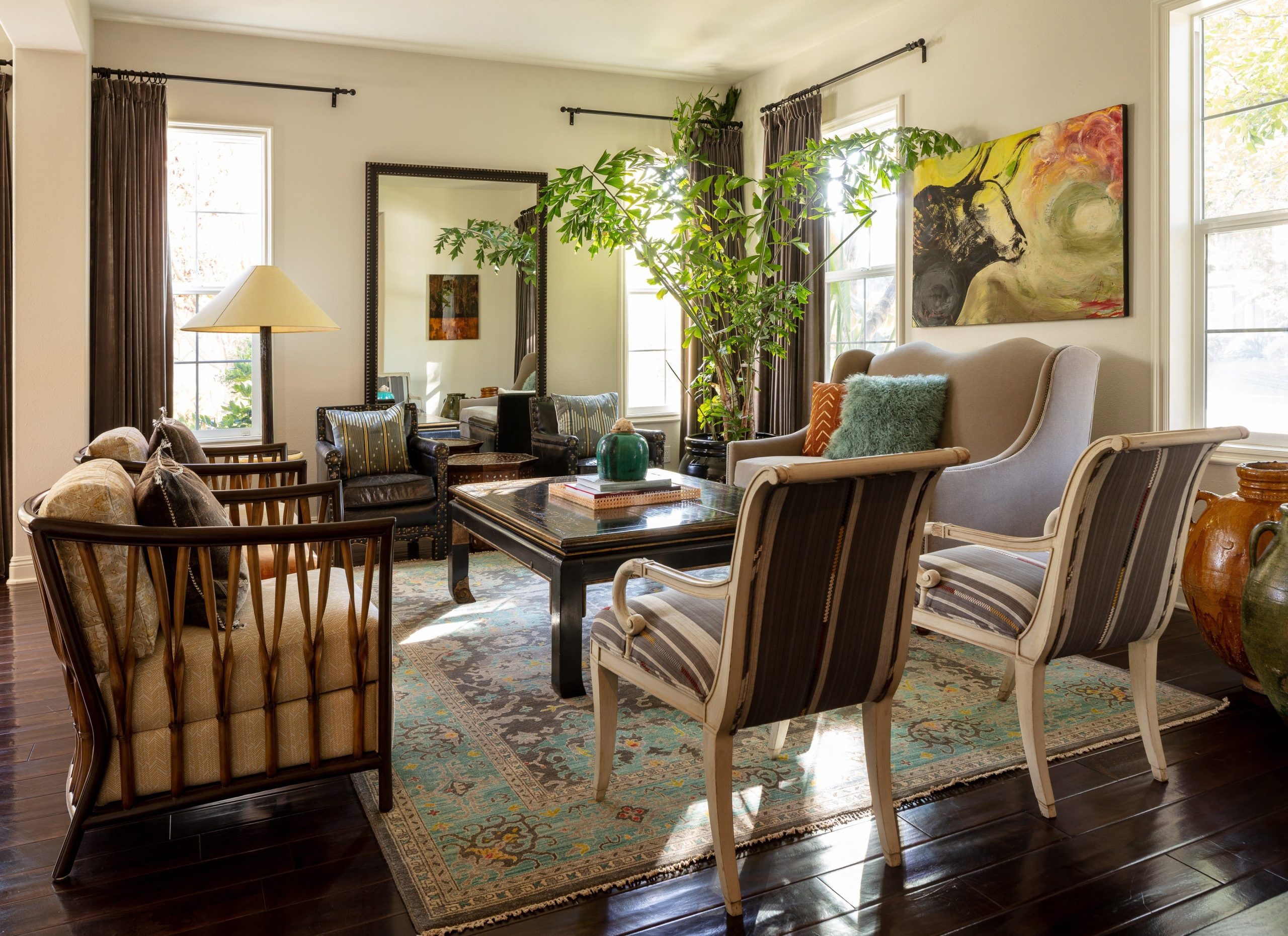European eclectic décor represents a sophisticated amalgamation of diverse design elements that have evolved over centuries of artistic expression. This captivating style marries the old with the new, creating spaces that are both aesthetically pleasing and deeply personal.
The beauty of European eclecticism lies in its ability to transcend conventional design boundaries, allowing homeowners to curate spaces that reflect their individual tastes while maintaining an air of refined sophistication.
European Eclectic Decor Ideas
Whether you’re drawn to the ornate details of French provincial furniture, the clean lines of Scandinavian design, or the rustic charm of Mediterranean influences, European eclectic décor offers endless possibilities for creating unique and inviting living spaces that tell your personal story through carefully chosen pieces and thoughtful arrangements.
1. Mix Period Furniture with Modern Elements
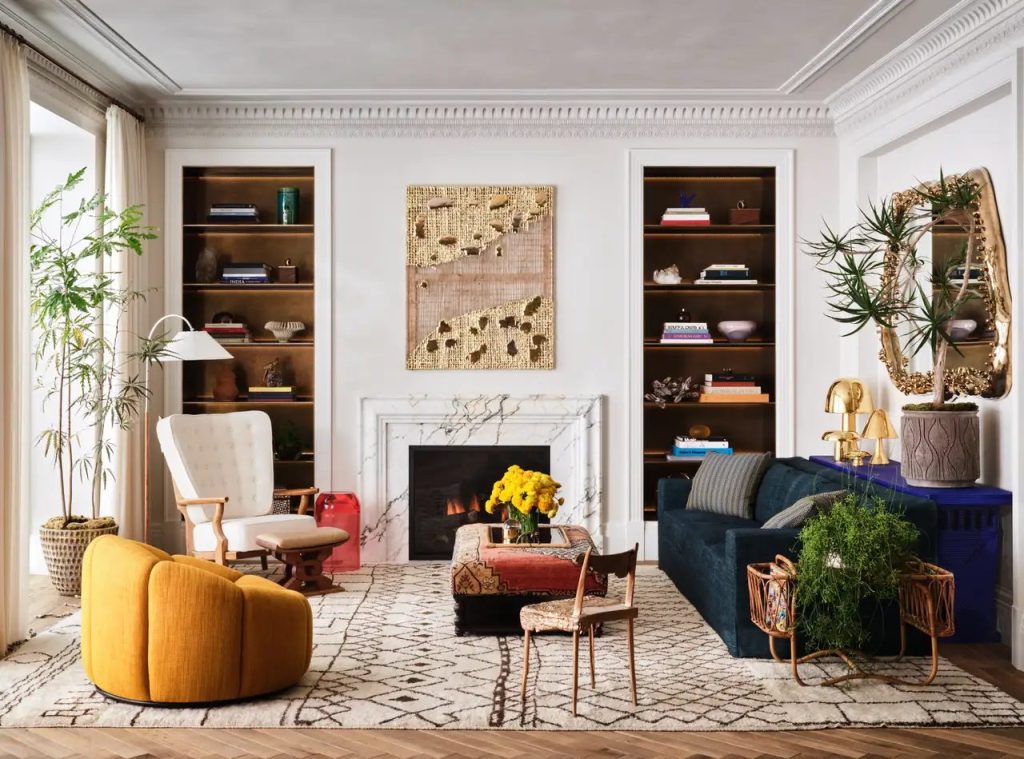
The art of combining vintage French Louis XVI chairs with a sleek, contemporary dining table creates an unexpected yet harmonious contrast. This juxtaposition of old and new serves as a testament to the versatility of European eclectic style, where period pieces become conversation starters rather than mere functional items.
The key to successful period mixing lies in maintaining a balanced color palette and ensuring that each piece, regardless of its era, contributes to the overall narrative of the space. Consider incorporating antique gilded mirrors alongside modern abstract art, or pairing a Victorian chaise lounge with minimalist side tables for an intriguing visual dialogue.
2. Layer Rich Textiles and Patterns
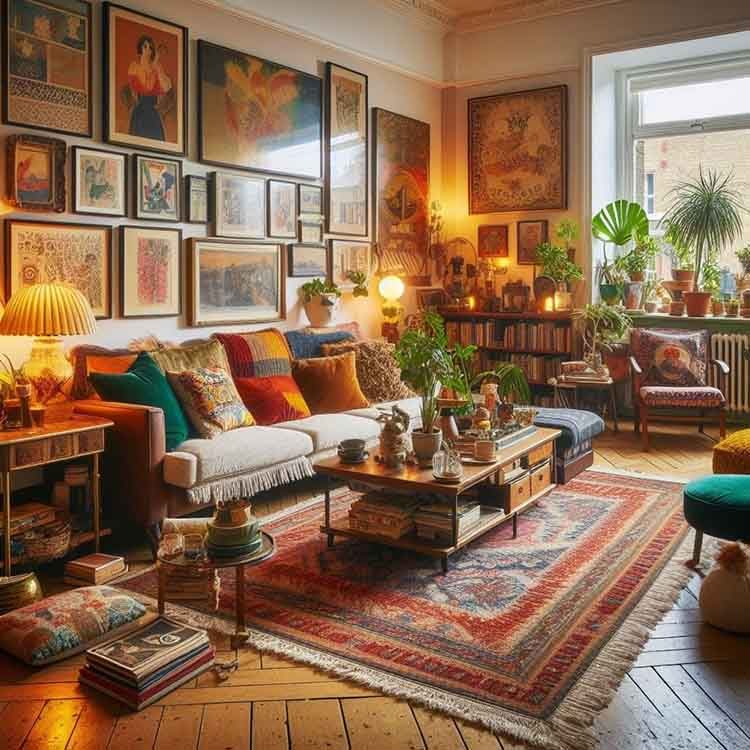
European eclecticism celebrates the interplay of various textiles, from sumptuous velvet upholstery to intricately woven tapestries. The secret lies in combining different patterns while maintaining a cohesive color story that ties the elements together.
Start with a foundation of classic damask or toile patterns, then layer in geometric prints, florals, and stripes. The key is to vary the scale of patterns – large-scale designs can coexist beautifully with smaller, more delicate prints when thoughtfully arranged. Consider incorporating plush throw pillows in contrasting textures and traditional European textiles like Welsh blankets or Scottish tartans.
3. Incorporate Architectural Salvage
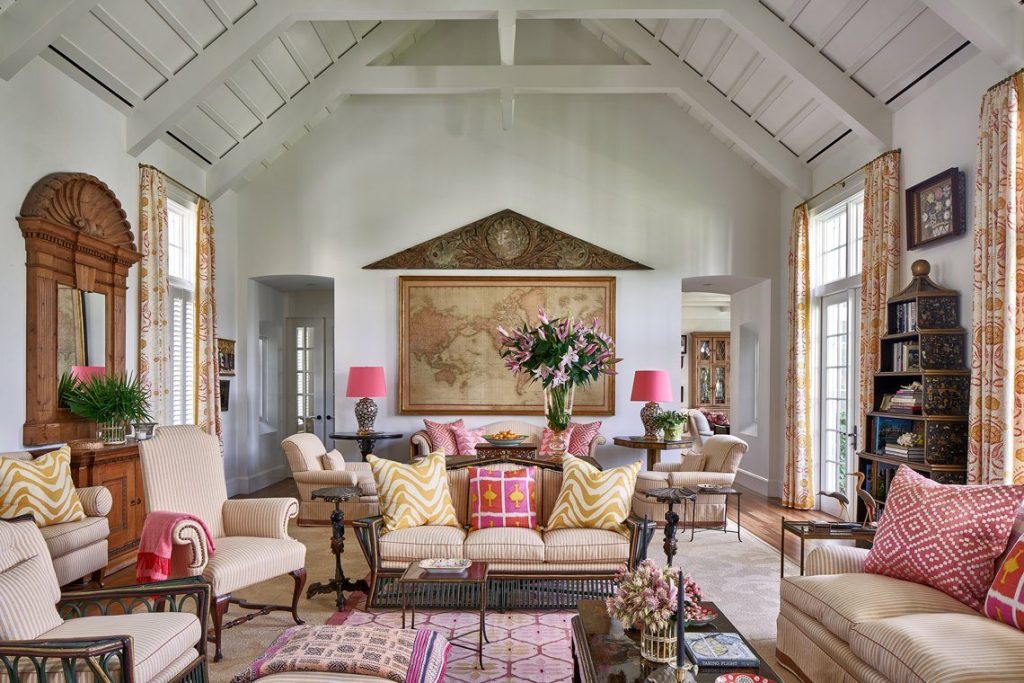
Salvaged architectural elements add authentic European character to any space. Think ornate ceiling medallions, weathered wooden doors, or decorative iron gates repurposed as wall art. These pieces bring history and dimension to modern interiors.
The beauty of architectural salvage lies in its imperfections. Each chip, scratch, and patina tells a story and adds to the overall character of your space. Consider mounting antique corbels as unique bookends or transforming vintage balustrades into distinctive console table legs.
4. Curate a Gallery Wall with European Flair
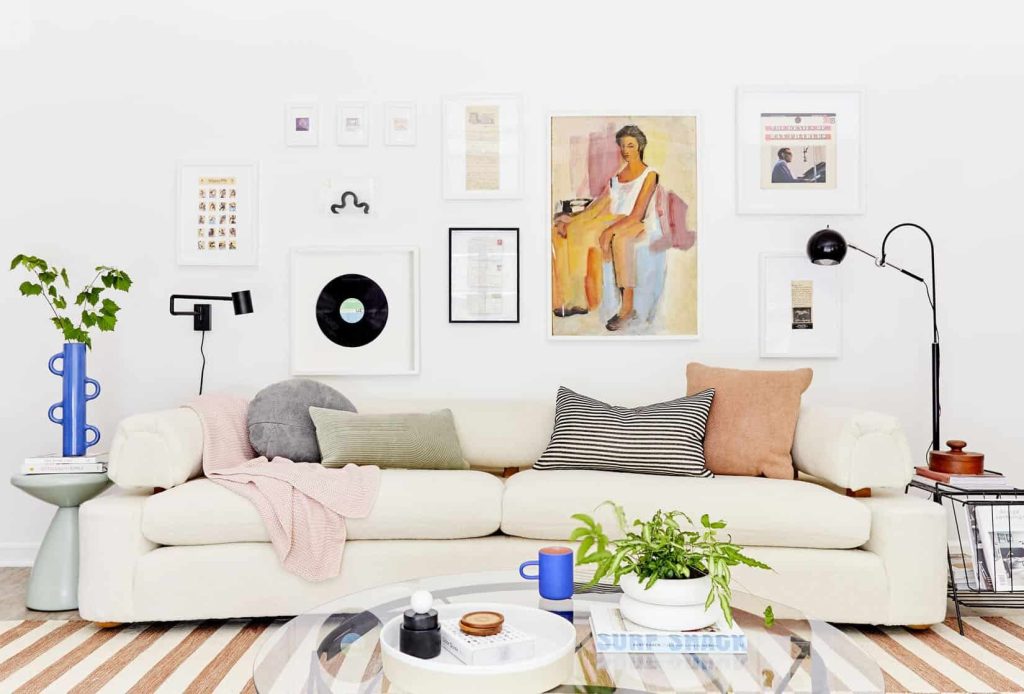
Create an eye-catching gallery wall that combines classical European art prints with contemporary photographs and personal mementos. The key is to mix mediums and frames while maintaining a sophisticated arrangement that draws the eye.
Consider incorporating vintage maps of European cities, botanical prints, and family photographs in frames of varying styles and finishes. The arrangement should feel organic yet intentional, with each piece contributing to the overall narrative of your space while maintaining visual balance.
Related Guide: 12 Eclectic Kids Room Ideas
5. Embrace Traditional Color Palettes
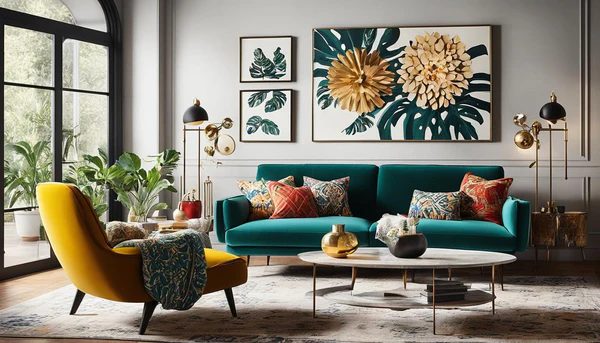
European eclectic style often draws from rich, historical color schemes. Deep jewel tones like emerald green and sapphire blue can coexist beautifully with muted neutrals and metallic accents.
The secret to successful color mixing lies in understanding the undertones of each shade and how they interact. Consider painting walls in a warm neutral shade while incorporating bold colors through furniture and accessories. This creates a sophisticated backdrop that allows statement pieces to shine.
6. Add Ornate Lighting Fixtures
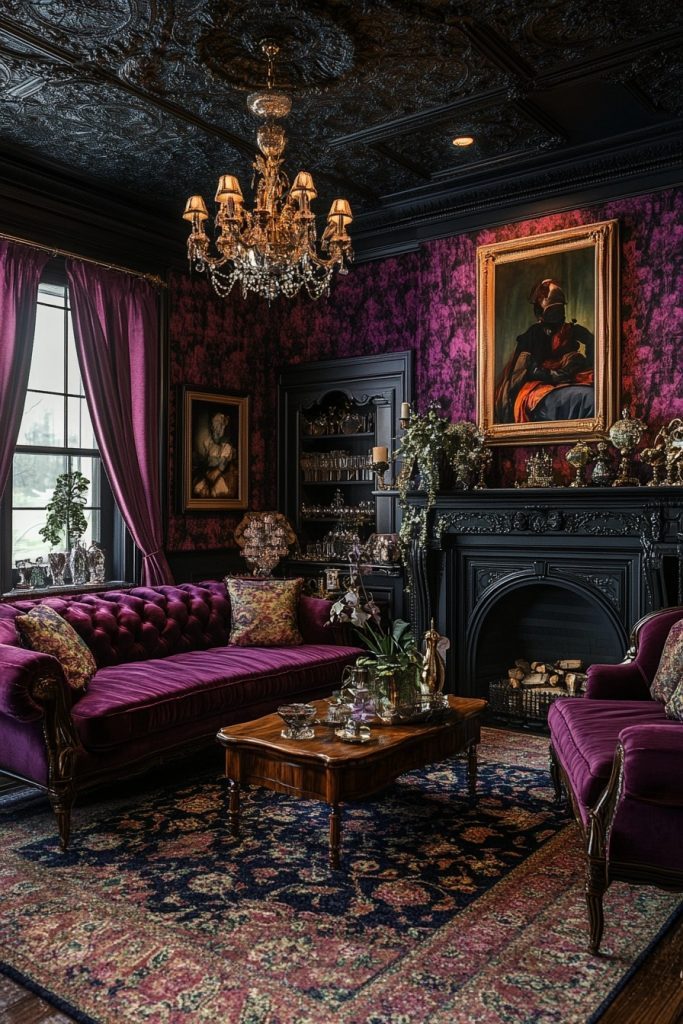
Lighting plays a crucial role in European eclectic décor, where vintage crystal chandeliers can hang comfortably alongside modern sculptural sconces. The key is to create layers of light that serve both functional and aesthetic purposes.
Mix periods and styles fearlessly – a baroque crystal chandelier can work beautifully with industrial-style table lamps when unified by a common finish or complementary design elements. Consider adding picture lights to illuminate artwork and create ambient lighting that enhances the room’s atmosphere.
7. Display Collections with Purpose
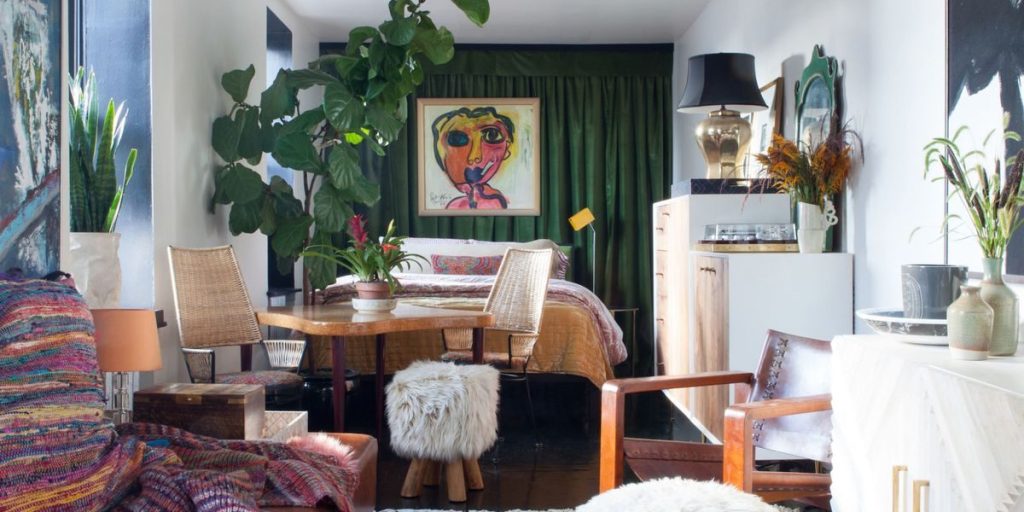
European homes often feature carefully curated collections that tell stories and add personality to spaces. Whether it’s vintage porcelain, antique books, or classical sculptures, the key is to display items thoughtfully.
Create vignettes that group objects by theme, color, or material while varying heights and scales. Consider using traditional European display pieces like vitrine cabinets or étagères to showcase collections while maintaining a sense of order and sophistication.
8. Incorporate Classical Architectural Details

Add architectural interest through crown molding, wainscoting, or decorative ceiling treatments that echo European design traditions. These elements provide a foundation for eclectic furnishings and décor.
Consider installing picture rail molding to create a gallery-like atmosphere, or add ceiling medallions to enhance lighting fixtures. These architectural details can transform simple spaces into rooms with character and historical charm.
9. Use Antique Mirrors Strategically
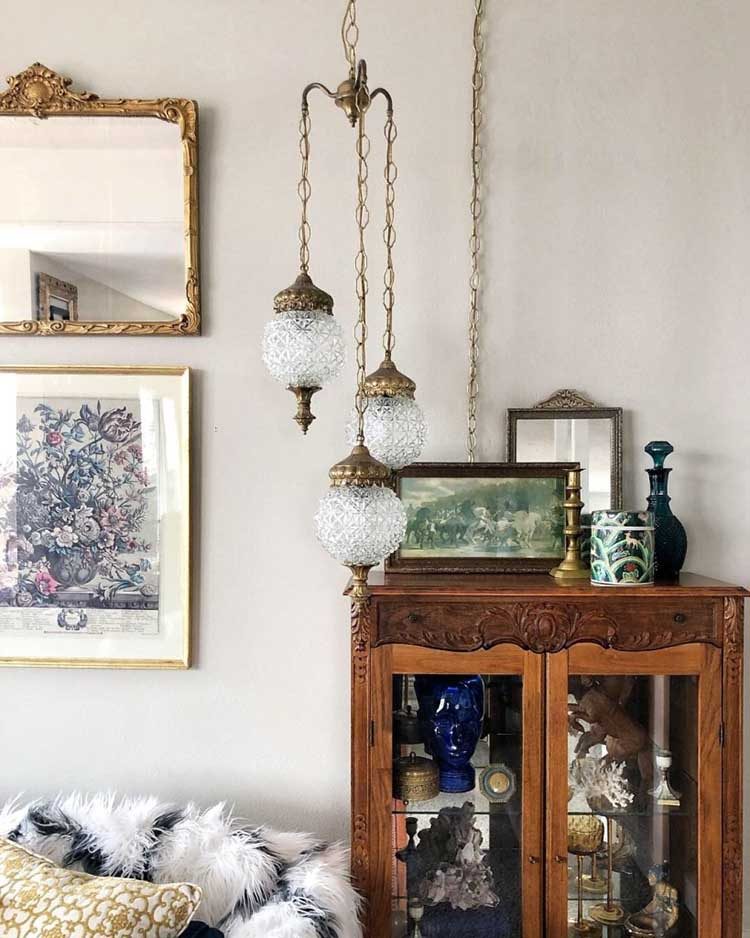
Mirrors not only add light and depth to spaces but also serve as artistic elements in European eclectic décor. Vintage mirrors with ornate frames can become stunning focal points while fulfilling practical functions.
Layer mirrors of different sizes and styles, or create a dramatic impact with a single oversized piece. Consider placing mirrors to reflect garden views or architectural details, enhancing the room’s connection to its surroundings.
10. Mix Materials and Finishes
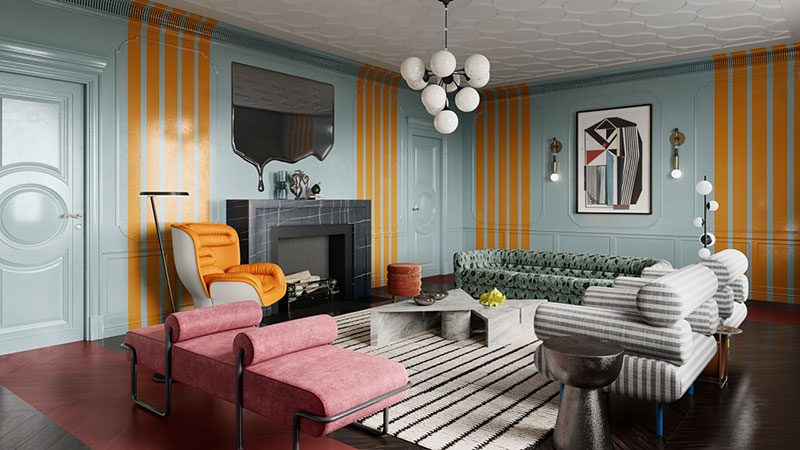
Combine different materials like marble, brass, wood, and velvet to create rich, layered spaces. The key is to balance smooth and textured surfaces while maintaining a cohesive color palette.
Incorporate elements like marble-topped tables with brass legs, or mix weathered wood with polished metals. The contrast between materials adds depth and interest while celebrating the diverse influences of European design.
11. Create Intimate Seating Areas
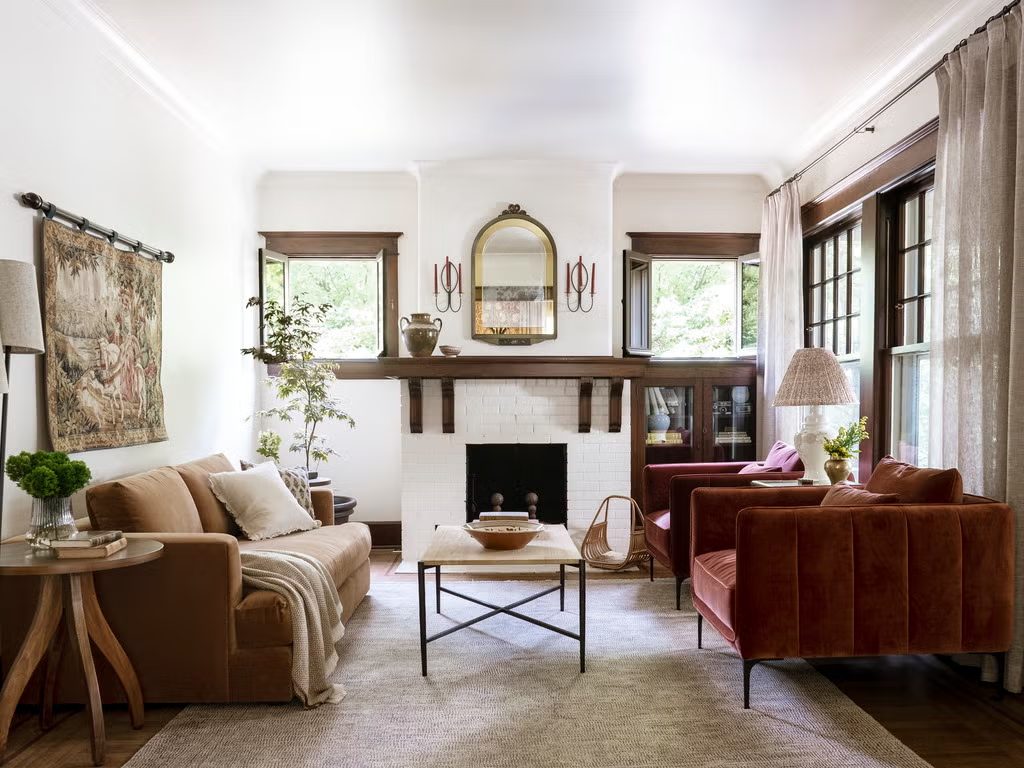
European homes often feature conversation areas that encourage intimate gatherings. Arrange furniture in ways that facilitate comfortable dialogue while maintaining elegant proportions.
Consider creating multiple seating areas within larger spaces, each with its own character but linked through common design elements. Mix formal and casual pieces to achieve a balanced, welcoming atmosphere.
12. Layer Window Treatments
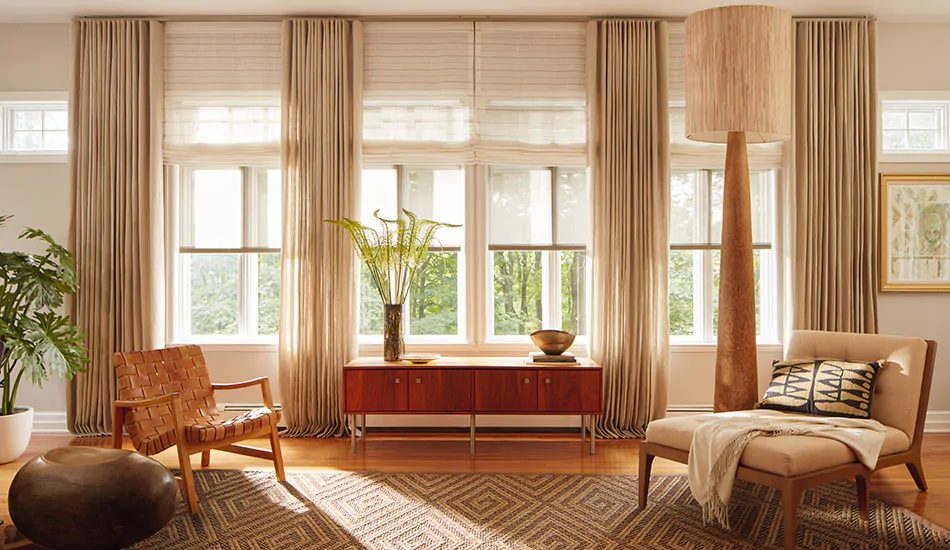
European eclectic style often features elaborate window treatments that combine different textures and materials. Start with functional elements like Roman shades or shutters, then add decorative layers.
Consider pairing simple linen panels with ornate valances, or mixing sheer curtains with heavier drapes. The key is to create a layered look that provides both function and visual interest.
Related Guide: 14 Eclectic Gallery Wall Ideas
13. Incorporate Traditional Patterns
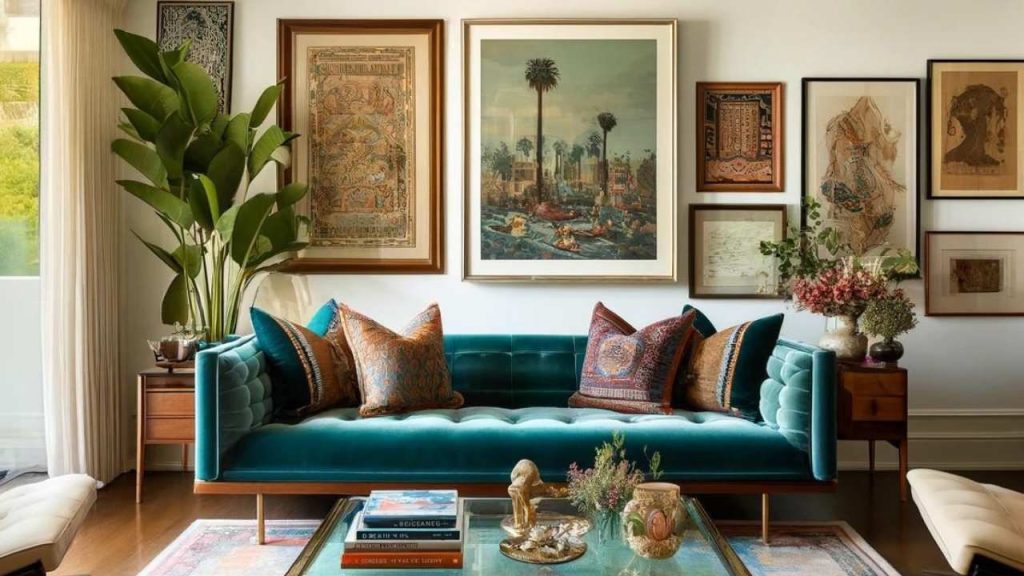
Classic European patterns like damask, toile, and chinoiserie can be mixed with contemporary designs to create unique combinations. The key is to vary the scale and style while maintaining a consistent color theme.
Use traditional patterns on larger pieces like upholstery or wallpaper, then add modern geometric prints through accessories. This creates a sophisticated blend of old and new that defines eclectic style.
14. Add Botanical Elements
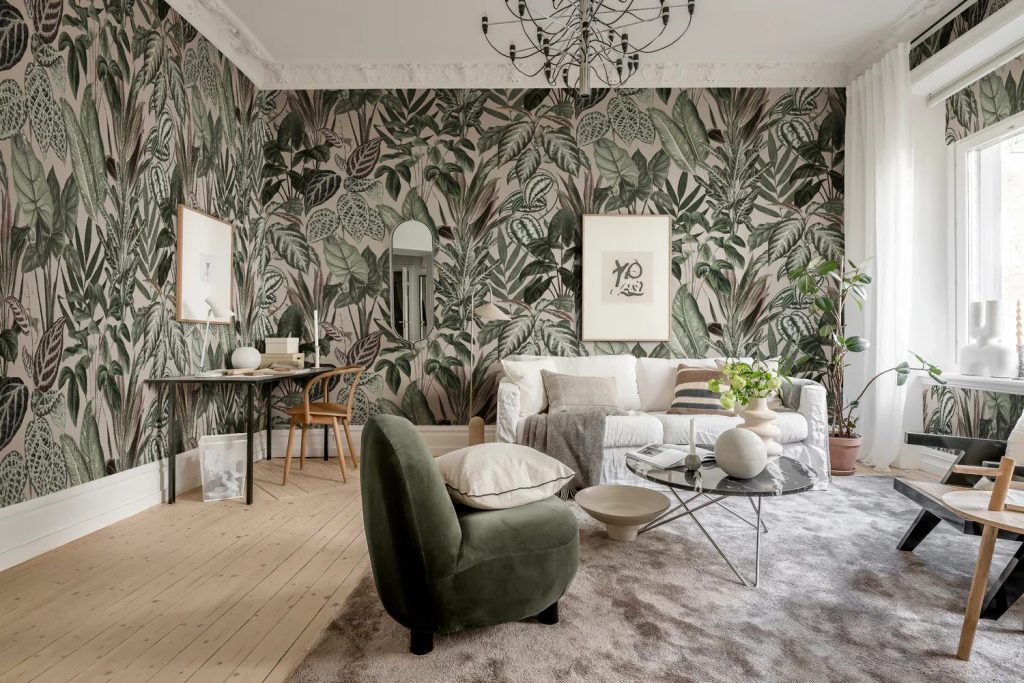
Living plants and botanical-inspired décor add natural beauty to European eclectic spaces. Consider incorporating both real plants and botanical artwork to create a connection to nature.
Mix formal topiaries with casual potted plants, and consider adding botanical prints or preserved specimens to walls. These elements add life and organic shapes to more structured design elements.
15. Use Books as Décor
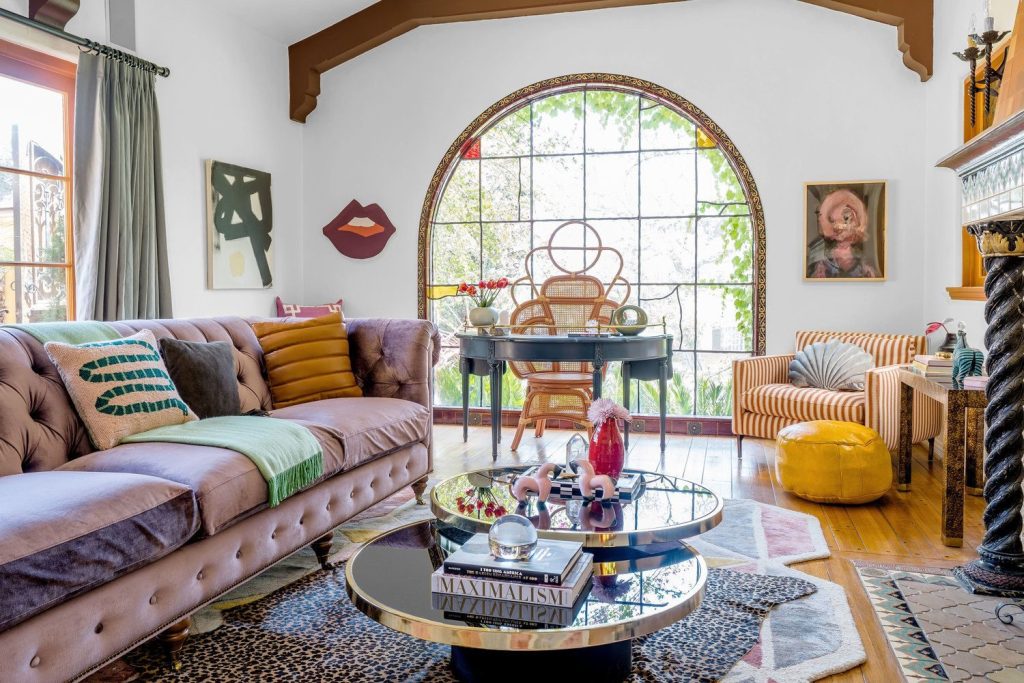
Books are both functional and decorative in European eclectic spaces. Create thoughtful arrangements that showcase beautiful spines while maintaining accessibility.
Stack books horizontally and vertically, using them as risers for decorative objects or arranging them by color for visual impact. Consider incorporating antique volumes alongside contemporary coffee table books.
16. Incorporate European Ceramics
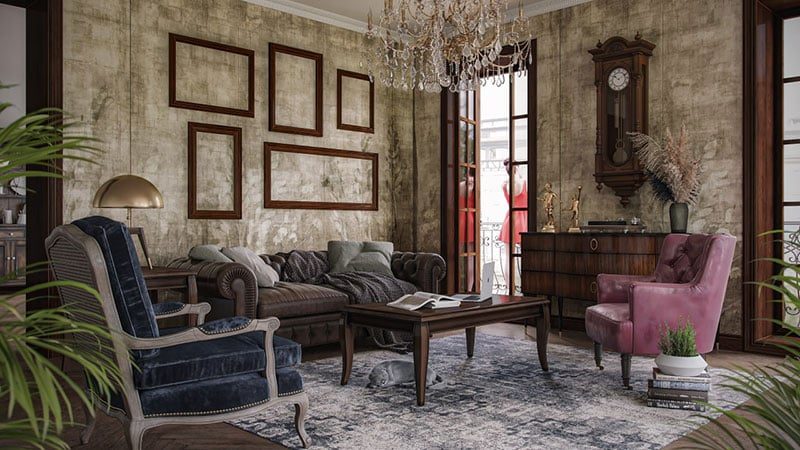
Traditional European ceramics, from delicate porcelain to rustic pottery, add authenticity and charm to eclectic spaces. Mix pieces from different regions and periods to create interesting displays.
Combine formal dinner services with casual earthenware, or display collections of single items like pitchers or plates. The key is to create arrangements that feel collected over time rather than purchased all at once.
Conclusion
European eclectic décor offers endless possibilities for creating sophisticated, personally meaningful spaces that honor traditional design while embracing contemporary elements. The key to success lies in thoughtful curation, attention to detail, and a willingness to mix periods and styles with confidence.
By incorporating these sixteen ideas, you can create spaces that feel both timeless and fresh, sophisticated yet welcoming.
Remember that true European eclecticism is about creating spaces that evolve over time, telling your personal story through a carefully chosen collection of elements that span different eras, styles, and origins. The result is a home that feels both curated and comfortable, refined yet deeply personal.

